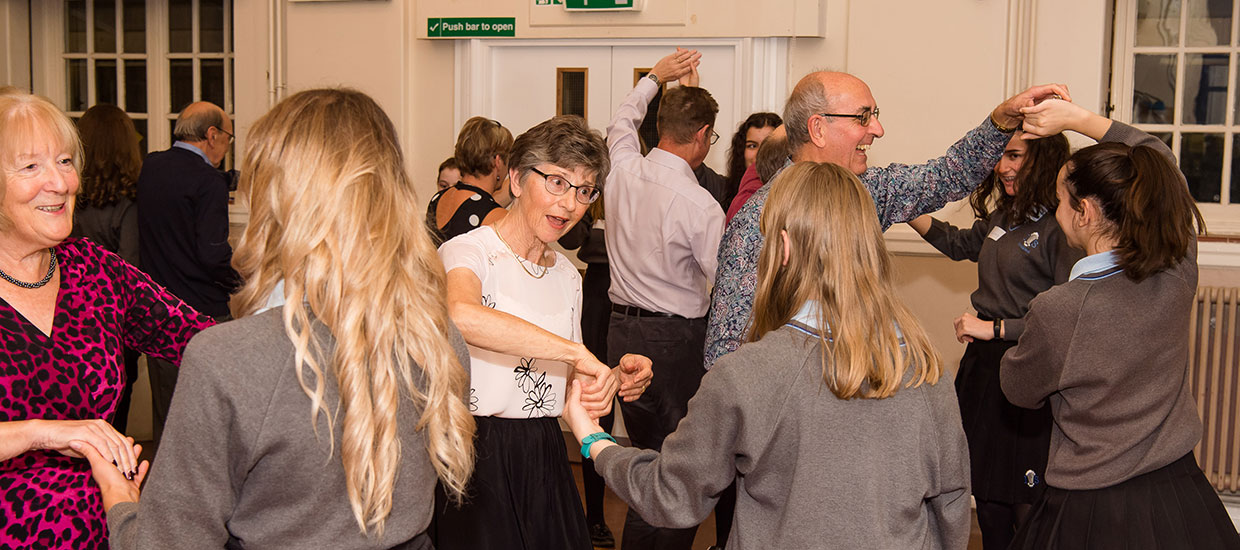Step-by-step: tea dance
An afternoon tea dance sounds inviting, but how do you take the first steps? Nikki Burch leads the way

Key ingredients
Equipment needed
Tables and chairs Mugs, plates and bowls Cups/glasses for soft drinks Tablecloths and napkins Sandwiches, cakes, biscuits and crisps Tea, coffee, milk, sugar and soft drinks Lighting and music/compere (and PA system) Cake stands, vases and flowers Clothing rail and hangers Name stickers for students Cards and pens for taking drinks orders Signage (for toilets, if required) Menu cards for each table, featuring allergen information (optional) Donation envelopes and feedback forms (optional)
Downloads
| tea-dance-letter-grandparents.docx |
| tea-dance-volunteer-letter.docx |
| tea-dance-volunteers.xlsx |
| tea-dance-guest-list.xlsx |
| tea-dance-feedback-form.docx |
| tea-dance-risk-assessment.docx |
Step by step
Rising to the occasion
Welcome guests at the door and ask them to sign in. Once everyone’s seated, run through the format of the event and point out emergency exits and toilets. Explain that each table will have its own waiting staff. Introduce the dance company and hand over to them to start the dancing. At the end of the interval, mention any fundraising the school is undertaking and let guests know how they can support this. Half-way through the second half, get students to hand out feedback forms and pens. At the end, thank everyone for coming, thank the dance company and any sponsors, and let guests know about any upcoming events or how they might keep in touch (website listings, Facebook group and so on).
The icing on the cake
a quick Google quiz or Survey Monkey) about whether they enjoyed the experience and are likely to volunteer for future events. Send a press release to local publications. Share the success of your event on social media and in an email to parents. Follow up with guests by emailing out a summary of feedback. Thank them for attending and let them know about other opportunities for them to engage with the school, for example careers talks, reading with students or running after-school clubs. Nurturing relationships with those who have more available time and disposable income than parents might yield unexpected benefits!
The finished product
‘The aim of our tea dance was to engage with grandparents and older people in the wider community. Tickets were free and we ran the dance from 4-6pm on a Wednesday afternoon. Local businesses and organisations embraced the idea of bringing young and old together, and couldn’t have been more generous. The entertainment was led by instructors from local dance company A&J Dancing, who brought along 24 of their existing customers, so we were guaranteed a packed dance floor.
Through Mid Sussex District Council’s ‘Silver Sundays’ fund, we secured £216 towards catering and to purchase masonry hooks and wires for atmospheric festoon lighting. Retirement Villages UK gave us £250 towards food, and also sent a professional photographer. Our local Waitrose provided cakes, biscuits and refreshments.
The finishing touches make all the difference. The Crowne Plaza Hotel in Felbridge lent tablecloths and cake stands, and our KS3 secretary created beautiful fresh flower arrangements in decorated jam jars. Each table had menu cards with allergen information and A4 envelopes inviting voluntary donations to our School Fund (this raised an incredible £187).
We promoted the event in emails to parents, flyers at parents’ evenings and through social media. Our school is a member of the East Grinstead Dementia Action Alliance, and I gave flyers to fellow members, including Age UK, Carers Support, churches and GP surgeries. Guests booked via email and we had a fantastic turnout of around 50 people. Among the guests were a former student who started at the school in 1939, and two who were here in the 1960s and 1970s!
A group of Year 9 students came along to help – we assigned a pair of students to each table, giving them name stickers, cards and a pen for taking orders. The atmosphere was incredible and the students, while nervous at first, soon fell into the swing of taking drinks orders and waiting on tables. They even took to the dance floor for a quick
The feedback we received was hugely complimentary:
- Nikki Burch, former fundraising and partnerships manager at Imberhorne School, East Grinstead, West Sussex (1,650 pupils)
More on events and activities
- Read more step-by-step event guides
- Virtual fundraising
- Earn while you learn – educational fundraisers
